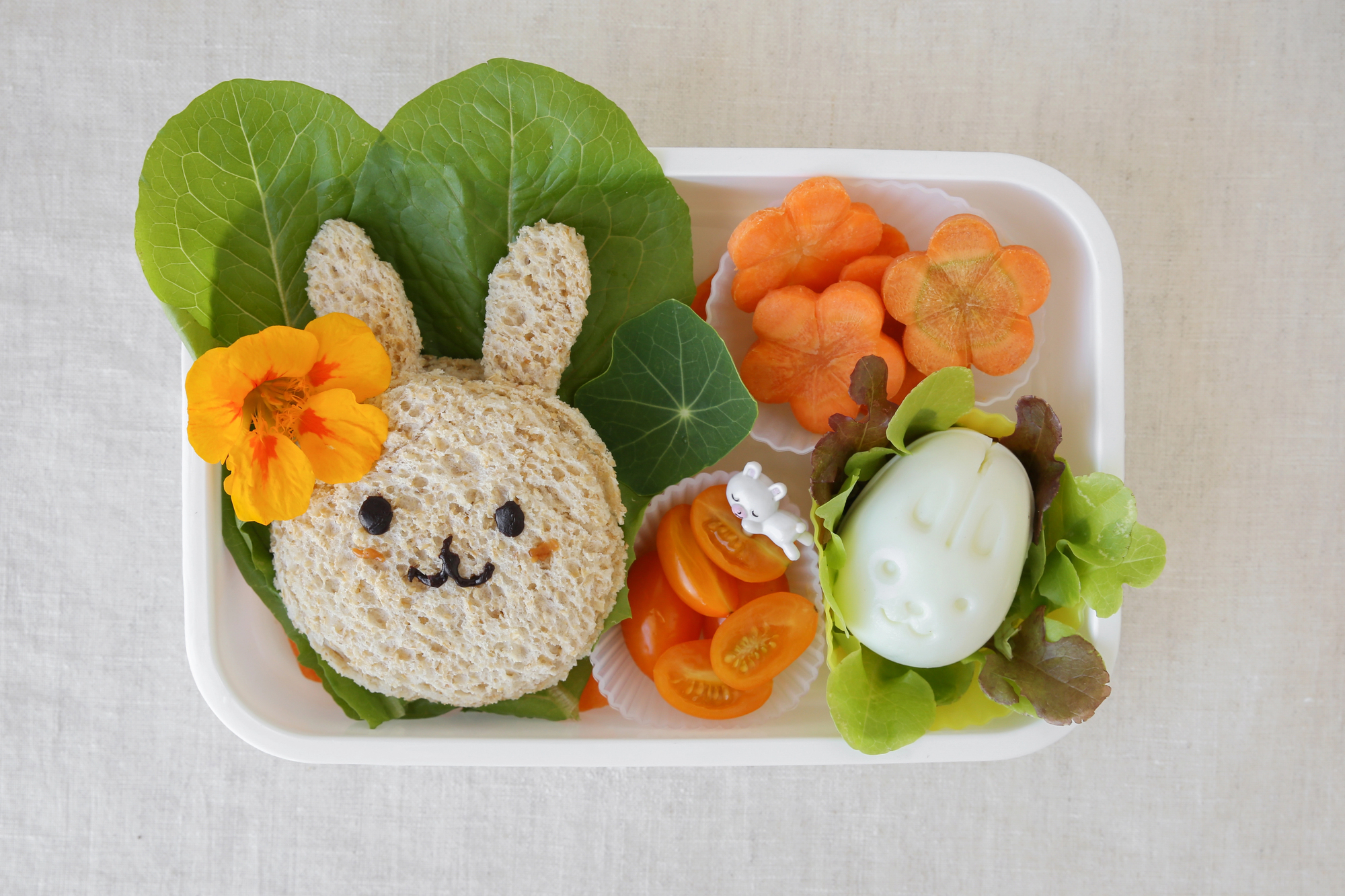If you’ve got a picky eater at home, you’re definitely not alone! Nearly every parent has been there—navigating the sometimes frustrating journey of mealtimes with a child who turns their nose up at food. But before your little one is willing to try and enjoy a new dish, there’s often a whole process of exploration and familiarization involved.
Think back to when you first introduced solids—tiny spoonfuls, funny faces, a bit of gagging, and yes, a whole lot of mess! But you kept trying, right? That same patience and persistence are key, even as they grow older. Rest assured, picky eating is quite common and typically a phase they will grow out of with time and encouragement. Here are some evidence-based tips to help make mealtimes smoother and a lot more fun!
1. Get Them Involved
Kids are more likely to eat what they help create, and getting them involved in the kitchen can have a big impact. Even tweens may enjoy the process of making their meals and having a say in what goes on their plate. Research shows that when children participate in food preparation, they become more interested in trying new foods and can develop healthier eating habits over time.
For younger kids, start with simple tasks like washing veggies or sprinkling cheese. As they grow older, they can help with more hands-on tasks like stirring, pouring, and even chopping with age-appropriate tools. For tweens, give them the freedom to plan a meal once a week or allow them to pick a recipe they’re interested in. This process helps build familiarity and fosters curiosity!
Expert Insight:
Research from the Healthy Eating Advisory Service indicates that repeated exposure to new foods can significantly increase children’s acceptance and liking of those foods. The service suggests that giving children time to explore new foods, discuss them without pressure, and engage with them in a relaxed manner can lead to greater familiarity and acceptance.
In addition, the Vegetable Intake Strategic Alliance (VISA) emphasizes that repeated exposure and variety are effective strategies for enhancing children’s liking of vegetables across various life stages and settings.
These insights highlight the value of introducing new foods multiple times in a supportive environment to help children develop healthier eating habits.
Supporting this, a study published in the American Journal of Clinical Nutrition also underscores the effectiveness of repeated exposure in increasing food acceptability. While the study doesn’t pinpoint an exact number of exposures, it emphasizes that introducing a new food multiple times positively influences children’s acceptance.
This aligns with the “10-time rule,” which suggests that offering a new food up to ten times increases the likelihood that a child will try and like it. This method provides a non-pressuring way to introduce new tastes and helps children develop a more varied palate.
2. Make Food Fun
Presentation matters no matter the age! 🍴 For younger kids, you can use cookie cutters to shape sandwiches or arrange vegetables into smiley faces. But for tweens, consider introducing fun themes like “Taco Tuesday” or “Pizza Night,” where they can add toppings or build their own meals. Encouraging tweens to personalize their meals can also encourage a more adventurous approach to food.
Playful storytelling is another great technique. For instance, you can tell them that peas give them super-fast running abilities or that carrots help them see in the dark, just like a superhero! And if you’re looking for another fun angle—imagine telling them that broccoli can turn them into a “green machine” packed with strength and energy. The key is to make eating feel like an adventure rather than a chore. The more exciting and enjoyable the experience, the more likely they are to give those veggies a try!

3. Encourage Exploration Without Pressure
One of the best ways to introduce new foods is to make it a low-pressure situation. Research supports the idea that forcing kids to eat certain foods can create negative associations, leading to more resistance. Instead, introduce new foods gradually—place a small portion on their plate each day, but don’t pressure them to eat it. Allow them to touch it, squish it, or even smell it. Over time, as they engage with the food in non-threatening ways, they’ll become more comfortable and curious about it.
Sometimes, it’s all about letting them explore the food at their own pace. They may not take a bite right away, but with patience, they may surprise you by trying it one day. Kids are more open to trying new things when they don’t feel forced.
As children grow into tweens, however, introducing new foods can require a slightly different approach. At this age, kids often start asserting more independence and may resist food due to social influences or peer pressure. To navigate this stage, create a relaxed, non-pressured environment by offering small portions and allowing them the autonomy to make their own decisions about whether to eat the food. Tweens are more likely to try new things when they feel like they have control over the decision.
Pro Tip:
“For a fun twist, create a ‘taste-testing challenge’ where your child tries one new food each week and earns a fun sticker or prize for giving it a go—no need to finish it, just try it!”
4. Skip the Power Struggles
No one wants mealtime to turn into a battle. This is especially crucial with little ones in primary school and tweens, as they can be more vocal about their food preferences and may have strong opinions about what they want to eat. Avoid forcing them to eat or turning food into a power struggle. Instead, create a relaxed and enjoyable mealtime atmosphere where food is just one part of a positive family experience.
Stay calm, model healthy eating habits, and encourage a positive relationship with food. When mealtimes are relaxed and pressure-free, children tend to be more willing to try new foods. Plus, the less fuss you make, the more likely they’ll be to explore new flavours on their own.
As children grow into tweens, they become more independent and may assert stronger food preferences. To foster positive eating habits, continue creating a relaxed, pressure-free environment where food is simply another enjoyable aspect of family time.
Family Meals Matter:
Studies show regular family meals have been shown to foster healthier eating habits and strengthen family bonds. Australian organizations emphasize the numerous benefits of shared mealtimes. For instance, the Raising Children Network highlights that family meals provide opportunities for children to try new foods, learn table manners, and engage in meaningful conversations, all of which contribute to positive eating behaviours. For tweens, mealtimes are a time to bond, share experiences, and connect with family members, making it easier for them to enjoy healthier foods when surrounded by supportive, positive influences.
Similarly, Dietitian for Kids reports that children and adolescents who participate in family meals at least three times a week are more likely to maintain a healthy weight, exhibit healthier eating patterns, and experience improved mental well-being.
These insights underscore the importance of family meals in promoting nutritional, social, and emotional development among children.
5. Sneak in the Good Stuff
While it’s essential to offer whole fruits and vegetables, there are also sneaky ways to boost meals with hidden nutrients. This doesn’t mean you’re tricking your child—it’s all about making nutrition a little easier to swallow! For instance, blending spinach into a smoothie or grating zucchini into spaghetti sauce adds extra vitamins and minerals without altering the taste too much.
Regular family meals are also essential for children of all ages. Research shows that children and adolescents who share meals with their families are more likely to maintain healthier eating habits and develop positive relationships with food. For tweens, mealtimes are an opportunity to bond, share experiences, and connect with family members, making it easier for them to enjoy healthier foods when surrounded by supportive, positive influences.
In addition to family meals, you can try sneaking in some healthy ingredients with creative recipes. Baking vegetables into muffins or adding pureed pumpkin to pancakes are great ways to ensure your child gets the nutrients they need, even if they’re not yet big fans of veggies. Every little bit counts!
Time-Saving Tip:
“Don’t have time for elaborate meal prep? Try prepping vegetables in bulk and storing them in small, easy-to-use containers so you can quickly add them to dishes. Even a handful of pre-cut carrots or cucumber slices can become a fun, nutritious snack.”
Conclusion: Fussy Eating Is Just a Phase
Fussy eating is a completely normal phase in a child’s development, and with patience and creativity, your child will gradually expand their palate. It may take time, but they will start to appreciate a wider variety of foods as they grow. So hang in there! The key is to keep offering new foods in a relaxed, positive environment and to maintain that same patience you showed when introducing solids.
Encouraging Words for Parents:
“Remember, fussy eating is a phase. With persistence, a little creativity, and a lot of love, your child will develop a healthy relationship with food over time. Don’t get discouraged!”
Do you have a tried-and-true trick for getting kids to eat their veggies? Share your funniest fussy eater moments in the comments – let’s help each other out! After all, we’re all in this together. Join our online community of parents for more tips, meal ideas, and support on the journey of raising healthy eaters. Let’s share stories and help each other out!









